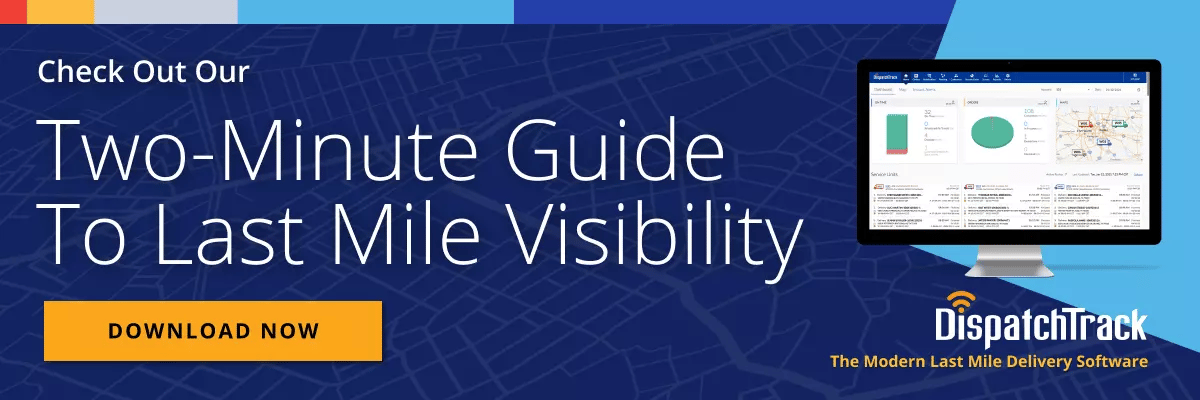Key performance indexes (KPIs) are great for comparing where you are from where you want to be when it comes to delivery management. They help you figure out how you’re faring against industry benchmarks, and they help you track your fleet performance over time. By keeping track of your fleet KPIs you can identify pain points and address them to reduce cost, increase customer satisfaction and improve profit margins.

The question is: which KPIs are actually worth tracking with your fleet software system?
Fleet KPIs You Should Track
Below are the important KPIs you must track to improve fleet operations.
- Delivery Time: Delivery time measures how fast an order arrives at the end customer. It measures the time for the whole order to be delivered. As you can imagine, this KPI is important since it affects customer loyalty and satisfaction.
- On-Time In-Full: On-Time In-Full shows the number of orders delivered based on the schedule and quantity specified when they were ordered. This metric is typically viewed as a customer-centric KPI, since it tracks how often the customer gets exactly what they ordered exactly when they ordered it.
- Productivity: Productivity reveals how effective the various elements of your last mile operation are. However you decide to define it, measuring productivity helps you ensure that your fleet can deliver its promises to customers.
- Capacity Utilization: Capacity utilization measures the extent to which you’re getting the maximum possible amount out of your delivery capacity. If you’re delivering a lot less than you’re capable of on paper, that can be a red flag.
- Truck Turning: Truck turning also popularly referred to as truck turnaround rate is the time difference of when the truck enters the hub or distribution center to pick up or drop off the goods and when the truck exits. When your trucks have short turning rates then that means your trucks are spending more time on the road instead of waiting at the hubs. This KPI reveals how well you are handling the loading and unloading of goods and orders.
- Average Dwell/Wait Time: Average dwell time refers to the amount of time drivers or carriers sit before the processing of pickup and delivery.
- Average Days Late: Average days late as the name suggests measures the number of days between the promised delivery due date and when the customer receives the order. This KPI offers significant insight into your delivery process. It also affects customer loyalty and satisfaction.
- Cost per mile: Cost per mile reveals the profit distribution of a load. It is computed by measuring the total load cost against the number of miles driven.
- On-Time Pickup: On-time pickup pertains to the number of pick-ups the carrier completed on time vis-a-vis the period's total shipments. Obviously, this KPI measures the performance of carriers—which is a crucial facet of your brand in the eyes of your customers.
- On-Time Final Delivery: On-time final delivery also commonly referred to as on-time delivery (OTD) is the ratio of packages delivered on time to end-users compared to the overall number of orders shipped. This metric helps track your overall fleet efficiency. Keep in mind that the orders shipped on time are for the entire order not by piece or parts of the order.
- Truck Utilization Rate: Truck utilization rate keeps track of how well you're loading your trucks—something that can have a big downstream impact on capacity utilization.
- Perfect order performance: Perfect order performance monitors the number of orders you ship without issues such as inaccuracy, delays, or damage. It's another KPI that affects customer loyalty and satisfaction.
How to Easily Track Your Fleet Metrics
There are plenty of KPIs you can track—and it’s important to choose them wisely according to your business objectives and goals. Begin with what the senior management is looking for and prioritize KPIs from the broad ones to the more detailed ones. Experts say that 10 to 20 KPIs are the ideal number for most companies.
When tracking KPIs, make sure that you are prioritizing processes and operations and that your metrics are relevant. Choosing the right KPIs to monitor helps you get a clear picture of the health of your delivery processes and uncover potential areas for improvement. Keep in mind that KPIs are not set in stone, and you may need to assess them periodically and make adjustments.
Similarly, your metrics shouldn’t be static—you also need to raise the bar once you've met your KPI targets or have exceeded them. Here, having a metric scorecard can be highly beneficial. Ideally, you’d be able to customize reports within your fleet tracking software based on your specified KPIs and parameters, then set them to run automatically on a regular basis.
How The Right Software Helps
At this point you might be thinking—that’s all well and good in theory, but whenever I’ve tried to measure these metrics in the past it’s taken a Herculean effort. Unfortunately, that’s something we hear way too frequent. Large, tech-savvy enterprises still find themselves in positions where legacy last mile or other software is causing data silos. It’s also not uncommon to find that your fancy software solutions for different touchpoints simply don’t play well together. In situations like these, you sometimes wind up with shadow IT (i.e. technology that isn’t officially sanctioned by the organization, but that folks feel they need in order to do their jobs). This can exacerbate these problems even further.
The right fleet tracking tool should make it easy to integrate with other solutions (e.g. PoS or WMS) and centralize all of your relevant data in one place. From there, it should provide you with the flexibility to create and develop your metrics, get the data you need when you need it, and run reports that actually reflect your business goals. This way, you can spot bottlenecks more easily and gain a clearer picture of your overall fleet performance.
To stay ahead of the competition today, effectively measuring your performance has never been more important. Tracking the right metrics efficiently and diligently will help you identify and resolve the issues that often cause customer satisfaction to decrease or operating costs to increase—or both.
